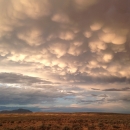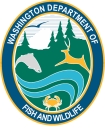Washington Shrub-Steppe Restoration and Resiliency Initiative: Defining Shared Spatial Priorities
Funding Year | Amount | Location |
FY22 | $175,000 | Sagebrush ecosystem in Washington |
Project Description
The Washington Shrub-Steppe Restoration and Resiliency Initiative (WSRRI) is a new collaborative effort dedicated to conserving the state’s shrub-steppe wildlife and habitat in the face of increasing threats from wildfire, climate change climate change
Climate change includes both global warming driven by human-induced emissions of greenhouse gases and the resulting large-scale shifts in weather patterns. Though there have been previous periods of climatic change, since the mid-20th century humans have had an unprecedented impact on Earth's climate system and caused change on a global scale.
Learn more about climate change and other stressors.
As part of a long-term transboundary strategy, we will work with our partners to further co-develop and integrate TerrAdapt into adaptive management plans, enabling managers to better prioritize where shrub-steppe conservation actions (e.g., protecting core habitat from invasive annual grasses and fire, restoring sagebrush sagebrush
The western United States’ sagebrush country encompasses over 175 million acres of public and private lands. The sagebrush landscape provides many benefits to our rural economies and communities, and it serves as crucial habitat for a diversity of wildlife, including the iconic greater sage-grouse and over 350 other species.
Learn more about sagebrush and mesic habitats post-fire, or mitigating key highway movement barriers) are implemented to maintain ecologically connected networks of habitat that support a thriving and resilient shrub-steppe ecosystem. TerrAdapt is a novel system that uses the latest remote sensing, AI, and spatial analysis technologies powered by Google Earth Engine (GEE) to monitor habitat conditions, project future impacts of climate change, and continuously revise spatial priorities accordingly.
In this era of rapid and widespread environmental change, managers without access to up-to-date, climate-smart, and actionable spatial priorities risk investing scarce conservation resources in areas where they will be less impactful, resulting in a poorer outcome for our region’s shrub-steppe species and habitats.
Partners
Washington Department of Fish and Wildlife, University of Washington




